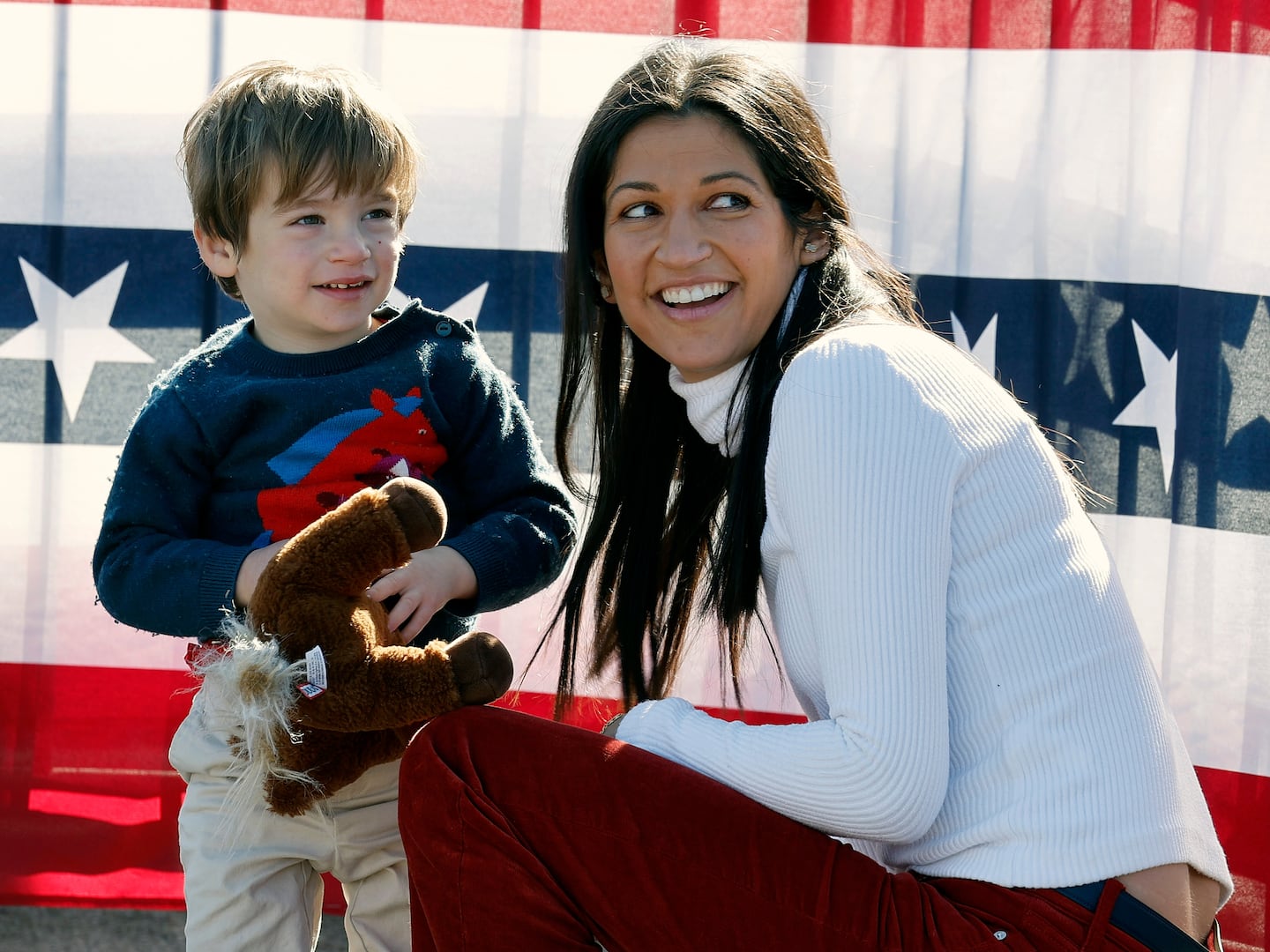
JoDee McLean is a 34-year-old kindergarten teacher in Sparks, Nevada, right outside Reno. Her students arrive at 9 a.m. and go home at 3 p.m. Their parents work jobs at Wal-Mart, UPS, in the casinos, and for local auto-parts companies. Their hours can be irregular, so they depend on the public schools to provide their kids with structure and enrichment. Eighty percent of the children are learning English as a second language, and 85 percent qualify for free or reduced-price lunches.
Like many other schools in poor neighborhoods in Nevada, Agnes Risley Elementary, where McLean works, has run a full-day kindergarten over the past several years. Nevada was at the forefront of a national full-day kindergarten movement that, over the past three decades, transformed early childhood education in America. In 1979, just 25 percent of kindergarten students were enrolled in full-day classrooms; today, the percentage has risen to more than 60.
By the end of the school year, poor Nevada children in full-day kindergarten outperform affluent children in half-day programs.
But now, with a series of cuts shredding much of Nevada’s public sector and reducing the state’s budget by about 40 percent—a bigger loss than the reductions implemented by the more infamously dysfunctional California—the state dollars that fund full-day kindergarten, along with many other vital public services, appear vulnerable. That means poor children will suffer, though research shows they disproportionately benefit from more hours in school, catching up on reading and math skills often learned by more affluent kids in private preschools or at home.
When she taught half-day kindergarten, her students fell behind, McLean told The Daily Beast. They didn’t have time for recess or library visits or lessons in social skills. Now, with full-day kindergarten, she sees a huge improvement. “We see it a lot in their journals,” she said. “They’re writing sentences a lot sooner. Their personal relationships with their friends, their ability to reason—we can actually spend time on common sense, daily routines. That is huge, because a lot of our kids have never been in a school setting before.”
Agnes Risley is a 10-minute drive from the Reno Strip, but, in sensibility, much farther from the faux-glitz of the casinos and the large hotels of downtown. This is a neighborhood of ramshackle wooden bungalows and trailers, yards with poultry running around out front, and discount supermarkets.
The full-day kindergarten system here serves two main purposes: First, for the working poor, it provides a safe, educational setting for young children, one that doesn’t require parents to contribute hundreds of dollars a month for additional hours in day care or private babysitting. If full-day didn’t exist, parents like one 54-year-old father, who works on inventory control for a local automotive mail-order company and whose wife is employed as a receptionist at a local hotel, would have some tough choices to make. Unable to afford private day care, he or his wife would have to go part-time, he said, reducing their already-tight family income by many thousands of dollars a year. “Full-day kindergarten is really beneficial to parents like us—working,” said the man, who asked to remain anonymous. “We all have bills to pay.”
Full-day kindergarten’s second function is more explicitly educational: Studies around the country, and data from Nevada itself, show that more than almost any other educational intervention, full-day kindergarten can work as an equalizing force for young children from across the socioeconomic spectrum. Yet budget cuts mean even a proven program could be at risk of cutbacks. Nevada Gov. Jim Gibbons, locked into a no-new-taxes pledge and facing dwindling tourism and gambling-tax revenue, cut the higher education system to the bone and over the past month has pushed draconian cuts to the K-12 education infrastructure. In Las Vegas, thousands of teachers could be laid off or have their salaries cut. Some class sizes may be doubled. And during the initial discussions about how to plug the latest budget hole, the governor mentioned the $25 million full-day kindergarten budget as ripe for elimination.
Nevada is not alone in its educational problems. A recent report by the Center on Budget and Policy Priorities found that 29 states plus the District of Columbia were cutting their K-12 budgets in response to the financial crisis. Arizona recently proposed eliminating $218 million in full-day kindergarten funds. Illinois has proposed early-education cuts that could deny 10,000 low-income kids access to preschool. Mississippi is cutting its educational spending by 9 percent. And the list goes on.
In Nevada, parents and teachers have been overwhelmingly critical of the plan to eliminate full-day kindergarten. And last week, with the state legislature in special session to discuss budget cuts, full-day kindergarten advocates managed to convince their political leaders to protect their system temporarily. Given the magnitude of the state’s financial crisis, however, it is unlikely the battle has been won permanently, since legislatures did grant school districts the flexibility to use their full-day kindergarten grants to plug holes elsewhere in their budgets. If the across-the-board cuts deepen, the temptation could grow to raid this pool down the road.
Were this to occur, the consequences for thousands of low-income Nevada residents would be serious. Dawna Ogden, the Washoe County kindergarten coordinator who oversees the program in Sparks, can whip out a folder of data on full-day kindergartners’ achievements. By the end of the school year, poor Nevada children in full-day kindergarten outperform affluent children in half-day programs, overcoming huge deficits the poor kids brought with them from home at the beginning of the year. “We’re at least able to close the achievement gap,” Ogden said. “All of the trends nationally and all of the major organizations for literacy and math are all strongly promoting early intervention. If you want school success, early intervention is how you get it.”
In a corner of her classroom, McLean has the children sit on the floor, cross-legged, while she tells them stories about Nevada’s history and has them spell out the word N-E-V-A-D-A. The kids are well-behaved; they don’t fidget; they don’t fight. They put their hands up with enthusiasm and answer their teacher’s questions.
“You can teach in a half-day,” says McLean, considering the possibility that because of the budget crunch in her home state she again might have to do just that. “You just have to be very picky in what you choose to use in your classroom. A full day lets kids experience much more.”
Sasha Abramsky is the author of Breadline USA. His latest book, a profile of President Barack Obama titled Inside Obama’s Brain, was published by Penguin’s Portfolio imprint in December.






